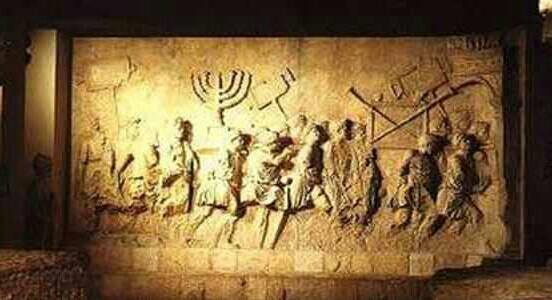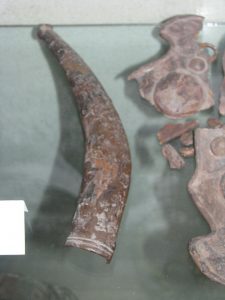
PHOTO: israelforever.org
Before there was Assassin’s Creed and the elusive ninja, the Sicarii stalked the shadows of the ancient world, knives in hand. While nobody seems to talk about the Sicarii in history books, it’s undeniable that they were utter badasses. Here’s what we know as told by the Jewish historian, Josephus:
The late centuries BC and first and second centuries AD were a tense time in the known world. Rome ruled the scope of the civilized world with an iron fist. Her reach extended as far East as Israel and Egypt, and as far West as Spain. The part we’re concerned about is a little slice called Judea, what we now know as Israel. In the dark corners of Jerusalem and its outlying cities, a secret society lurked in mysterious cloaks with hoods drawn up over their faces.
They had begun as a splinter group from the Jewish Zealots that began in the decades preceding the destruction of Jerusalem by Rome in 70 AD. The group mostly consisted of angry young Jewish men, men who were heavily opposed to the very idea of Romans living in their city. While other Jewish groups tried to work with the Roman occupation or tried to fight them politically, the Zealots took on different means. Often, they’d set carts afire and stage assassinations, breeding terror in the marketplace. But beneath the Zealot’s fury there lay a darker, more sinister sect. The Romans called them the Sicarii.

PHOTO: wikimedia
In their early days, the Sicarii were known for striking their targets with precision, quick as snakes. They attacked Roman officials in Judea and Jewish Roman supporters alike. When the kill was made, they’d melt back into the crowd, never to be heard from again until the next murder. The Romans had a heck of a time trying just to find them.
Their name comes from the Latin sicarius, meaning “dagger-wielder”. They were famous for their choice of weapon: the Sica. It was a short sword or large dagger commonly used by Illyrians, Thracians, and Dacians. The distinctive curved shape was designed to get around the sides of an opponent’s shield and stab or slash them in the back, which was, coincidentally, exactly how the Sicarii liked to use them. A plus for our favorite assassins, of course, was that these knives were easy to slip back behind a cloak and conceal. No one would know you had it once you’d hidden it away.
Things started to get more sinister just four years before the Destruction of Jerusalem in 70 AD, in a time that historians call “The Great Jewish Revolt”. The Sicarii leapt from the shadows, broke into Jerusalem, and began to unleash a series of atrocities on the city in an attempt to stir the Jewish citizens to war with Rome. When the Romans lay seige to the city, many wanted to surrender. The Sicarii were having none of it. They destroyed the city’s food supply so the Jews would have to fight against the Roman siege instead of negotiating peace. Later in the war, the Sicarii took over Masada, slaughtering over 700 Roman soldiers in the process. They took Antonia, and fought a guerrilla war against the Roman legions in Judea, employing the same cloak-and-dagger tactics that they used to assassinate their victims.
From their stronghold in Jerusalem, a downward spiral began. The Sicarii began to lose all sense of reason in their lust for freedom against Rome. In one of Josephus’ accounts, he wrote that they raided a nearby Jewish village called Ein Gedi, massacring 700 of their own side’s women and children.
The Sicarii and other Zealot groups managed to completely liberate Jerusalem in AD 66, when they took control of the Temple. They executed anyone, Jewish or Roman, who tried to stand in their way. By then, Jerusalem’s population had had enough. They staged a coup against the radical groups in the city. Even though the Sicarii were able to silence that uprising, it didn’t do them much good. The Romans showed up in AD 70 and lay siege to the city. By then, the Sicarii had begun to fight amongst themselves and started to completely fall apart. Eventually, the Romans took over the city and razed it to the ground, brick by brick.
The Sicarii escaped to the Jewish fortress of Masada. They would hold out until 73 AD, but by then, their war would be all but lost. The iron fist of Rome was still closed tightly around Judea’s throat.

